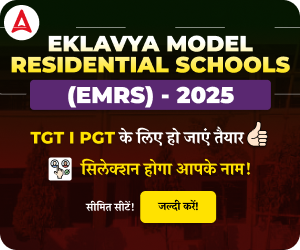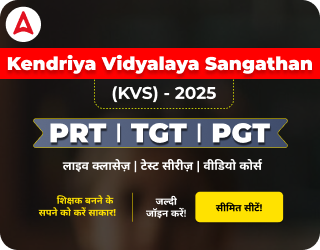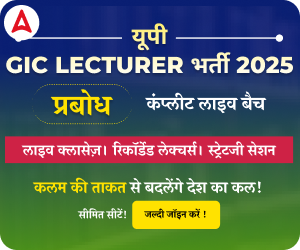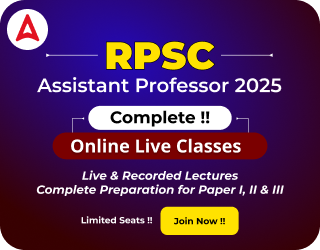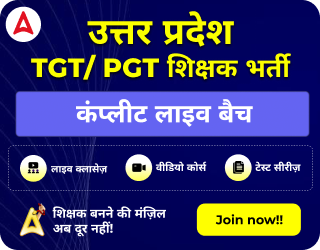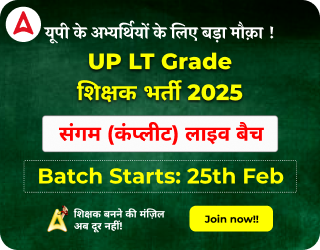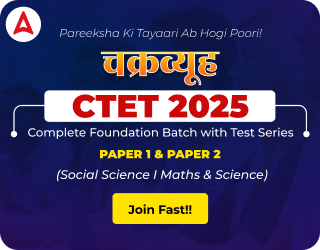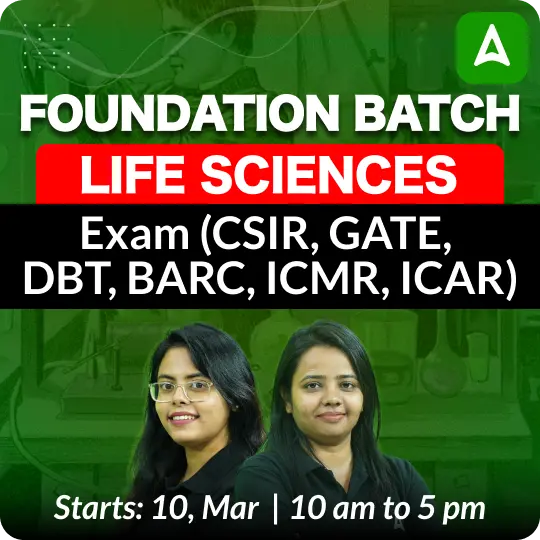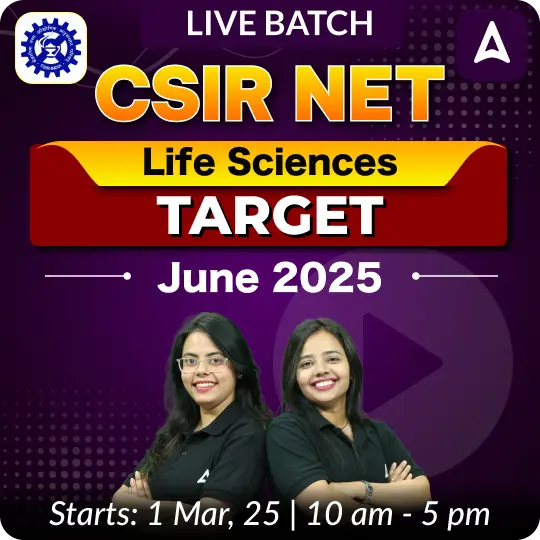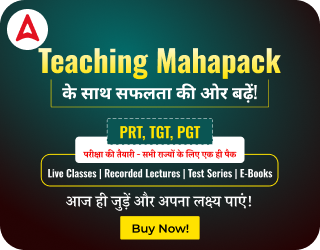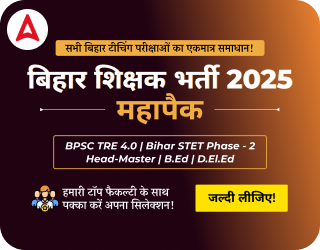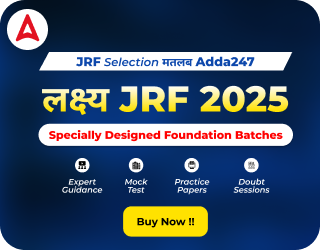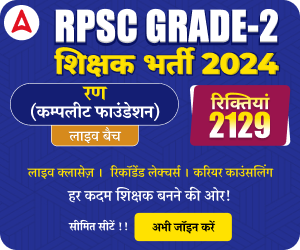Table of Contents
UP GIC Lecturer Syllabus is available for reference for the candidates who are preparing for the UP GIC Lecturer Exam 2024. It is highly recommended for the candidates to access and download the UP GIC Lecturer Syllabus 2024 PDF to get acquainted with the extent of the curriculum they need to cover to prepare for the exam.
UP GIC Lecturer Syllabus 2024
UPPSC will conduct a written exam as a selection process for the UP GIC Lecturer post. Hence, candidates must read and understand the nuances of the UP GIC Lecturer post. In 2022, UPPSC released notification for UP GIC Lecturer Exam to fill out 1473 vacancies
UPPSC GIC Lecturer Exam Pattern 2024
The UP GIC Lecturer Exam Pattern for 2024 consists of two parts. Part-1 focuses on General Hindi, which carries a total of 100 marks and is allotted 2 hours for completion. This section includes Hindi Nibandh (essay writing). Part-2 comprises optional subjects, allowing candidates to choose their area of specialization, and is worth 300 marks with a time limit of 3 hours. This structure emphasizes both language proficiency and subject expertise, ensuring a comprehensive assessment of candidates’ qualifications for the lecturer position.
| UP GIC Lecturer Exam Pattern 2024 | |||
| Number of Parts | Name of Subjects | Maximum Marks | Time Duration |
| Part-1 | General Hindi | 100 | 2 Hours |
| Hindi Nibandh | |||
| Part-2 | Optional Subjects | 300 | 3 Hours |
UP GIC Lecturer Syllabus 2024 Mains
The candidates will find the UP GIC Lecturer Syllabus in detail in the following sections. The UP GIC Lecturer is given subject-wise in eay to understand format for ease of understanding for the candidates.
UPPSC GIC Lecturer Hindi Syllabus PDF
The UPPSC GIC Lecturer Hindi Syllabus covers Hindi literature’s history, key literary figures, poetics, grammar, and journalism. Candidates must understand Hindi’s evolution, significant literary movements, and the impact of classical Sanskrit literature. This syllabus assesses their analytical and teaching proficiency in Hindi, ensuring they’re equipped for an advanced lecturer role.
- हिन्दी साहित्य का इतिहास
- गद्य-साहित्य का उद्भव और विकास:
- पत्रकारिता
- काव्यशास्त्र
- भाषाविज्ञान
- हिन्दी-व्याकरण
- संस्कृत-साहित्य के प्रमुख रचनाकारों के नाम एवं उनकी प्रमुख कृतियाँ
- संस्कृत-व्याकरण
UPPSC GIC Lecturer English Syllabus
The UPPSC GIC Lecturer English Syllabus includes English literature, language, and comprehension. Candidates will cover literary works, key authors, criticism, literary movements, and forms. Language skills like sentence correction, synonyms, antonyms, idioms, and phrases are also tested. Additionally, comprehension and skills in sentence transformation, active and passive voice, and reordering jumbled sentences form part of the syllabus, equipping candidates with both critical analysis and English language mastery essential for the lecturer role.
UP GIC Lecturer Syllabus for English Literature
- Authors and works
- Literary terms, Movements, Forms, Literary criticism
UP GIC Lecturer Syllabus for English Language
- A short unseen passage for comprehension
- Correction of sentences
- Direct and Indirect narration
- Transformation of sentences including Active & Passive Voice
- Synonyms,
- Antonyms,
- Homonyms
- Rearranging the Jumbled sentences
- Fill in the blanks with appropriate Prepositions.
- Idioms & phrases
- One word substitution
- Figure of speeches
- Prefixes & Suffixes
UPPSC GIC Lecturer Physics Syllabus
The UPPSC GIC Lecturer Physics Syllabus encompasses key areas in physics, including Mechanics, Thermal Physics, and Waves and Oscillation. It addresses Optics, focusing on light behavior, as well as Electricity and Magnetism, which cover electric fields and currents. Additionally, the syllabus includes Modern Physics, exploring concepts like quantum mechanics and atomic structure. This comprehensive coverage equips candidates with a solid foundation in essential physics principles.
- Mechanic
- Thermal Physics
- Waves And Oscillation
- Optics
- Lasers
- Electricity And Magnetism
- Modern Physics
UPPSC GIC Lecturer Chemistry Syllabus
The UPPSC GIC Lecturer Chemistry Syllabus includes key areas such as Physical Chemistry (gaseous, liquid, and solid states, thermodynamics, and chemical kinetics), Inorganic Chemistry (atomic structure, s-block, p-block, d-block, and f-block elements, and coordination compounds), and Organic Chemistry (isomerism, hydrocarbons, and functional groups like alcohols and carboxylic acids). This comprehensive syllabus ensures a solid foundation in essential chemistry concepts for aspiring lecturers.
UP GIC Lecturer Syllabus for Chemistry
- Physical chemistry Gaseous-state
- Liquid state
- Solid State
- Thermodynamics
- Dilute solution
- Surfacephenomenon
- Chemical Kinetics
- Chemical equilibrium
- Electrochemistry
UPPSC GIC Lecturer Syllabus for Inorganic Chemistry
- Atomic structure
- S-block elements
- P-block elements
- d-block elements
- cordination compounds
- Organometallic chemistry
- Bioinorganic chemistry
- f-block elements
UP GIC Lecturer Syllabus for Organic Chemistry
- Organic Chemistry
- Isomerism
- Hydrocarbon
- Aromatic Hydrocarbon
- Haloalkanes
- Alcohols
- Aldehyde & Ketones
- Carboxylic acid and its Derivatives
- Organic compounds containing nitrogen
- Bio-molecules
- Polymers
- Chemistry in everyday life
UPPSC GIC Lecturer Biology Syllabus
The UPPSC GIC Lecturer Biology Syllabus encompasses various critical topics within the fields of botany and zoology. Key areas of study include cell biology, genetics, evolution, ecology, and the classification of living organisms. The syllabus also covers human anatomy and physiology, plant physiology, and microbiology. This broad framework ensures that candidates develop a robust understanding of biological principles and their applications, preparing them effectively for a teaching role in higher education.
UPPSC GIC Lecturer Syllabus for Botany
- Plant Diversity
- Angiosperms
- Plant Physiology
- Microbiology
- Economic Botany
- Plant Pathology
- Ecology and Environment
UPPSC GIC Lecturer Syllabus for Zoology
- Animal Diversity
- Non-Chordates
- Chordates
- Anatomy of – Frog, Pigeon and Rabbit.
- Animal Histology
- Animal Physiology and Biochemistry
- Animal Embryology
- Cell Biology (Cytology and Molecular Biology)
- Genetics
- Biotechnology
- Organic Evolution
UPPSC GIC Lecturer Mathematics Syllabus
The UPPSC GIC Lecturer Mathematics Syllabus covers a comprehensive range of topics essential for higher-level mathematics education. Key areas include algebra, calculus, geometry, trigonometry, and statistics. Candidates will delve into concepts such as limits, derivatives, integrals, and differential equations, along with the properties of geometric figures and their applications. The syllabus also emphasizes problem-solving techniques and mathematical reasoning, equipping aspirants with the skills needed to effectively teach mathematics at the collegiate level.
- Relations and Functions
- Algebra
- Calculus
- Co-ordinate geometry of two dimensions
- Vectors and three-dimensional geometry
- Group
- Linear Algebra
- Vector integration
- Rieman integration
- Statices
- Dynamics
- Trigonometry
UPPSC GIC Lecturer Sanskrit Syllabus
The UPPSC GIC Lecturer Sanskrit Syllabus encompasses a variety of topics aimed at developing a deep understanding of Sanskrit language and literature. It includes the study of grammar, syntax, and semantics, focusing on the intricacies of the language. Candidates will explore classical texts, poetry, and prose, alongside important philosophical and cultural concepts found in Sanskrit literature. The syllabus also emphasizes translation skills and the interpretation of ancient manuscripts, preparing aspirants to teach Sanskrit effectively at the college level.
UP GIC Lecturer Syllabus for Sanskrit- वैदिक साहित्य
- ऋग्वेद – अग्नि सूक्त (1.1.1), विश्वेदेवा सूक्त (1.89), विष्णु सूक्त (1.154), प्रजापति सूक्त (10.121)।
- यजुर्वेद – शिव संकल्प सूक्त (34.1-6)।
- कठोपनिषद् – प्रथम अध्याय (1-3 वल्ली)
- ईशावास्योपनिषद – (सम्पूर्ण)
- वैदिक वाड़्मय का संक्षिप्त इतिहास (काल निर्धारण, प्रतिपाद्य विषय)
- वेदांग का संक्षिप्त परिचय (शिक्षा, निरुक्त, छन्द)
- दार्शनिक चिन्तन
- सांख्य दर्शन – सृष्टि प्रक्रिया, प्रमाण, सत्कार्यवाद, त्रिगुण का स्वरूप, पुरुष का स्वरूप (ग्रन्थ- सांख्यकारिका)
- वेदान्त दर्शन – अनुबन्ध चतुष्टय, साधन चतुष्टय, माया का स्वरूप, ब्रम का स्वरूप (ग्रन्थ- वेदान्तसार)
- न्याय/वैशेषिक दर्शन – प्रमाण (प्रत्यक्ष, अनुमान, उपमान, शब्द) (गन्थ- तर्कभाषा, तर्कसंग्रह)
- गीता दर्शन – निष्काम कर्म योग, स्थितप्रज्ञ का स्वरूप (गीता : द्वितीय अध्याय)
- जैन दर्शन एवं बौद्ध दर्शन का सामान्य परिचय (ग्रन्थ- भारतीय दर्शन -बलदेव उपाध्याय)
- व्याकरण
- लघुसिद्धान्त कौमुदी – संज्ञा प्रकरण, सन्धि प्रकरण, कृदन्त प्रकरण, तद्धित प्रकरण, स्त्री, प्रत्यय, समास।
- सिद्धान्तकौमुदी – कारक प्रकरण।
- वाच्य परिवर्तन (कर्तृवाच्य, कर्मवाच्य, भाववाच्य)।
- शब्द रूप (परस्मैपदी, आत्मनेपदी) – भू, एध, अद्, हु, दा, दिव्, सु, तुद्, रुध्, तन्, की, चुर।
- भाषा विज्ञान
- भाषा की उत्पत्ति और परिभाषा
- भाषाओं का वर्गीकरण
- ध्वनि परिवर्तन, अर्थ परिवर्तन
UPPSC GIC Lecturer Syllabus for Sanskrit- साहित्य शास्त्र
- काव्य प्रकाश/साहित्य दर्पण- काव्य प्रयोजन, काव्य लक्षण, काव्यहेतु, काव्यभेद। शब्द-शक्ति (अभिधा, लक्षणा, व्यंजना)। रस का स्वरूप, रस भेद, विभाव-अनुभाव-सुचारी भाव, स्थायी भाव, भाव का स्वरूप। गुण का स्वरूप एवं भेद। रीति का स्वरूप एवं भेद। अधोलिखित अलंकार का सामान्य परिचय-शब्दालंकार- अनुप्रास, यमक, श्लेष। अर्थालंकार- उपमा, रूपक, उत्पे्रक्षा अतिशयोक्ति, अर्थान्तरन्यास।
- दशरूपक- नाट्य लक्षण, नाट्य भेद, अर्थप्रकृति, अवस्था, सन्धि, नायक का स्वरूप एवं भेद। पारिभाषिक शब्द- नान्दी, प्रस्तावना, सूत्रधार, कंचुकी, प्रवेशक, विष्कम्भक, प्रकाश, आकाशभाषित, जनान्तिक, अपवारित, स्वगत, भरतवाक्य।
- ध्वन्यालोक (प्रथम उद्योत) – ध्वनि का स्वरूप।
UPPSC GIC Lecturer Syllabus for Sanskrit – लौकिक साहित्य
- रामायण एवं महाभारत: काल निर्धारण, उपजीव्यता, महत्व।
- प्रमुख काव्य- किरातार्जुनीयप(प्रथम सर्ग), शिशुपालवधा(प्रथम सर्ग), नैषधीयचरिता (प्रथम सर्ग), रघुवंशम् (द्वितीय सर्ग), कुमार सम्भव (प्रथम सर्ग)।
- प्रमुख खण्ड काव्य- मेघदूतम् नीतिशतक।
- प्रमुख गद्य काव्य- कादम्बरी (कथामुख), शिवराजविजयम्(प्रथम नि:श्वास)।
- कथा साहित्य- पंचतंत्र, हितोपदेश:।
- नाटक- अभिज्ञानशाकुन्तलम् (1-4 अंक), उत्तररामचरिम् (1-3 अंक), मृच्छकटिकम् (प्रथम अंक), रत्नावली, प्रतिमा नाटकम्
- चम्पू काव्य- नलचम्पू (आर्यावर्त वर्णन)।
- महाकाव्य, खण्डकाव्य, गद्यकाव्य, चम्पू काव्य एवं नाट्य-काव्य की उत्पत्ति एवं विकास।
UPPSC GIC Lecturer Economics Syllabus
The UPPSC GIC Lecturer Economics Syllabus covers essential concepts in economics, including microeconomics and macroeconomics, with a focus on theoretical and practical applications. Candidates will study topics such as demand and supply analysis, market structures, consumer behavior, and national income accounting. The syllabus also explores economic policies, fiscal and monetary systems, and development economics, equipping aspirants with the knowledge needed to teach economics at the college level effectively.
- Micro Economics
- Macro Economic
- Money and Banking
- Public Finance
- International Trade and Foreign Exchange
- Indian Economy
- Elementary Statistics
UPPSC GIC Lecturer Civics Syllabus
The UPPSC GIC Lecturer Civics Syllabus encompasses key concepts in civics, emphasizing the study of government systems, political ideologies, and civic responsibilities. Candidates will explore the structure and functions of various political institutions, the principles of democracy, and the significance of constitutional rights. The syllabus also addresses topics such as public administration, political parties, and the electoral process, preparing aspirants to effectively teach civics at the college level.
UPPSC GIC Lecturer Syllabus for Civics, Section A
- Political Science- Meaning, definitions, nature and scope.
- Difference among Politics, Political Science, Political Theory, and Political-Philosophy.
- Relationship of Political Science with Science, Sociology, Economics, History, Geography, Psychology and Ethics.
- Definition of Civics, its nature and scope.
- Citizenship
- Concept of state, elements and Theories of origin-Social Contract, Evolutionary and Marxist.
- Theories of the functions of state- Liberal, Socialist, and Welfare,
- Sovereignty- Power, authority and influence.
- Law, Liberty and Equality and Justice.
- Constitution Meaning, finds and classification
- Concept of Government.
- Modern Governments- Federal and Unitary, Parliament and Presidential.
- Organs of government
- Concept of democracy
- Party system, Pressure Groups, Public opinion,
- Methods of election and Franchise.
- Concept of Nation, Nationality, Internationality and Non Alignment.
- Factional elements of Political System Caste, Language, Communalism and Region.
- Recent trends in Political Science
- Indian Political Thinkers
UPPSC GIC Lecturer Syllabus for Civics, Section B
- History of National Movement in India and the Constituent Assembly;
- Indian Constitution and the Preamble; Salient features of Indian constitution, Fundamental Rights and Fundamental Duties, Directive Principles of State Policy, Constitutional Amendment Procedure and Main Constitutional Amendments, Article 370.
- Indian Federal System and the Centre State Relations;
- Composition of Federal Government and its functioning. Federal Executive: President- Election, Powers and function’s, Emergency-powers.
- Vice-President-Election and functions
- Federal Council of Ministers and the Cabinet: Composition and functioning; Appointment of Prime Minister-Functions and importance;
- Federal Legislature: Parliament-Composition, Powers and importance of Rajya Sabha and Lok Sabha; Relationship between Rajya Sabha and Lok Sabha.
- Federal Judiciary: Supreme Court; Composition and Jurisdiction; Judicial Review; Public Interest Litigation Cases
- Composition and functioning of State Government with special. reference to UP.
- State Executive: Governor- Appointment, Powers, Function Privileged and Roles.
- Council of Ministers-Composition and functions
- Chief Minister
- State Judiciary
- Local Government and Local Self-government
- Powers, Functions, and Role of District Magistrate
- District Courts: Composition and Functions; Lok Adalat Concept of Local Self-government with special reference the 73rd and 74th Constitutional Amendment Act
- Public Corporations and Commissions, in India: Planning Commission, Election Commission, Union Public Service Commission, Inter-state Council, Lok Pal and LokAyukta.
- Foreign Policy of India; Regional Organizations and the United Nations Organization, Human Rights and Non Alignment Movement
UPPSC GIC Lecturer Geography Syllabus
The UPPSC GIC Lecturer Geography Syllabus covers a comprehensive range of topics designed to provide a solid foundation in both physical and human geography. Candidates will study physical features of the Earth, including landforms, climate, and ecosystems, as well as human geography topics such as population distribution, urbanization, and economic activities. The syllabus also emphasizes geographic tools and techniques, including maps, GIS, and remote sensing. This curriculum aims to equip aspirants with the knowledge and skills necessary to effectively teach geography in higher education.
- Meaning and scope of Geography, Approaches and methods to the study of geography, Major Geographical thoughts- Environmental Determinism, Possibilism, Probabilism, Regionalism, Logical Positivism and Behaviorism.
- Structure of atmosphere, insolation and heat budget, horizontal and vertical distribution of temperature, inversion of temperature, air pressure belts wind system, movement of wind belt, local winds, humidity and precipitation, rainfall type, cyclone and anticyclone, classification of climates by Koeppen and Thornthwaite, Major climate regions of world.
- International structure of earth rock types, Plate Tectonic Theory, Volcanoes and earthquakes folds, faults, and resultant topography, WM Davis’s concept of cycle of erosion, works of river, underground water, sea and glaciers.
- Ocean deposits, temperature and salinity of oceanic water, ocean currents, tides and waves, coral islands and coral reefs origin, distribution and environmental importance.
- Concept of ecosystem, terrestrial ecosystems types and their distribution, deforestation – problems and conservation, disaster types and management.
- Man- environmental interrelationship impact of technology agriculture, industrial and information revolution, population growth and distributional pattern, Demographic Transition Theory, rural and urban settlements.
- Concept and classification of resources, Principles of resource conservation, Water, soil mineral and energy, uses, problems and their conservation. Geographical conditions, world distribution, production and trade, major crops – rice, wheat, cotton sugarcane, tea, coffee and rubber major agricultural regions of world, major industrial regions of world, factors of location of industries, major theories of industrial location, international trade, Major trade, blocks, major international transportation routes and harbors.
- Culture elements, major cultural realms. races and tribes.
- Concept and types of regions salient features of developed and developing countries of word study of some select, regions of world – Anglo, America, European community, Russia, China, Japan, South-east Asian and South west Asia.
- India’s geographical features – relief drainage system, climate, natural vegetation and soil.
- Major mineral resources- iron – ore. mica. bauxite atomic minerals and energy resources,
- Major agriculture crops of food grains and each crop, recent trends in agriculture, irrigation and multipurpose projects. industrial development, industrial region, industrial policy, location distribution, production and problems of major industries iron and steel, cotton textile, cement, sugar and paper
- Regional patterns of population growth and distribution, related problems and their solutions, regional development disparity – causes and remedial measures, reorganization states – problems and their solution
UPPSC GIC Lecturer History Syllabus
The UPPSC GIC Lecturer History Syllabus covers ancient, medieval, and modern Indian history, emphasizing cultural developments, freedom struggles, and colonial impacts. It also includes world history topics, such as major revolutions and empires. This syllabus equips candidates with the knowledge and analytical skills needed to teach history in government intermediate colleges.
UPPSC GIC Lecturer Syllabus for History- Archeological, Literary foreign Accounts
- Prehistory
- Proto
- Vedic Culture
- Early Vedic Culture-
- Later Vedic Culture
- Rise of Magadh Empire
- North India from 500 AD to 650 AD.
- Art and Architecture
UPPSC GIC Lecturer Syllabus for History- Sectional Mughal Sultanate
- Mohd. Ghori inventions of slave dynasty
- Administration
- Land Revenue System
- Religion Policy of Mugha
- Deccan Policy of Mughal
- Mughal’s Culture and Civilization Education
- Organisation of Army
- Society of Mughal
UPPSC GIC Lecturer Syllabus for Modern History
- Mercantilism, European Traders in India in the Seventeenth & eighteenth centuries Arrival of Dutch, French, Portuguese and British East India Company in india.
- Rise of the English Power in Bengal
- Clive’s Second
- Warren Hasting
- Administrative Reforms of Cornwallis. (1786-93)
- Revenue
- Mysore Under Haider Ali and Tipu Sultan
- Lord Hastings and Establishment of British Paramountcy in India
- William Bentinck (1825-35)
- Ranjeet Singh Achievement:
- Lord Dalhousie (1848-56)
- Revolt 1857-
- Land Revenue system:
- Lord Curzon (1899-1905) Partition of Bengal
- Religious and Social Reforms (Cultural awakening)
- Rise and Growth of Indian National Movement
UPPSC GIC Lecturer Syllabus for History- Eminent National Leader of India
- Ram Mohan Roy- Role in Modernization of India, Dadabhai Naoroji 1825-1917, Gopal Krishna Gokhale, Bal Gangadhar Tilak, Lala Lajpat Rai, Mahatma Gandhi, Jawahar Lal Nehru
- Rise Muslim CommissionAct
- First Phase of Independence
UPPSC GIC Lecturer Sociology Syllabus
The UPPSC GIC Lecturer Sociology Syllabus explores fundamental sociological concepts, theories, and perspectives. It covers topics such as social structure, social change, and institutions, including family, education, and religion. Additionally, it delves into key social issues like stratification, inequality, and globalization. This syllabus aims to equip candidates with a comprehensive understanding of sociological principles and their application in real-world scenarios, preparing them for effective teaching in government intermediate colleges.
UPPSC GIC Lecturer Syllabus for Basic Sociological Concepts and Process
- Sociology
- Society
- Other Related Concept
- Cooperation, Competition, Conflict, Acculturation, Socialization, Stratification and Differentiation
- Classical and Contemporary
- Social Thinkers Western Thinkers: Auguste Comte, Karl Marx, Herbert Spencer, Emile Durkheim, Max Weber
- Indian Thinkers
- Contemporary Sociological Theories Phenomenology and Ethnomethodology, Functionalism, Structuralism, Marxism, Conflict Theory, Exchange Theory and Symbolic Interactionism
- Social Change and Social Control Social Change : Concept, Factors and Theories. Social Control : Concept means andAgencies Social Change Processes : Industrialization, Urbanization; Modernizations, Westernization and Globalisation. Role of Media in Social change and Social control
- Indian Society and Culture
- Indian Rural Social Systems
- Caste System, Jajmani System, Kinship
- Contemporary Indian Social Problems
- Social Research
UPPSC GIC Lecturer Education Syllabus
The UPPSC GIC Lecturer Education Syllabus encompasses key principles and practices of education. It addresses various educational philosophies, policies, and systems while emphasizing curriculum development, teaching methodologies, and assessment techniques. The syllabus also explores contemporary issues in education, including inclusive education and the role of technology in learning. This framework aims to prepare candidates with a robust understanding of educational theories and their practical application in teaching environments.
- Meaning and scope of education
- Relationship between Education and Philosophy
- Education Psychology
- Educational Research
- Measurement and Evaluation in Education
- Distances education
UPPSC GIC Lecturer Commerce Syllabus
The UPPSC GIC Lecturer Commerce Syllabus covers essential topics in commerce, including principles of management, business organization, accounting, and marketing. It delves into financial management, entrepreneurship, and the economic environment affecting business operations. Additionally, the syllabus examines contemporary issues in commerce, such as e-commerce and globalization, equipping candidates with a comprehensive understanding of the commercial landscape and its practical implications.
- Accounting
- Business Organization and Management
- Business Environment
- Business Economics
- Business Statistics
- Money and Banking
- Auditing and Insurance
- Entrepreneurship and Small Business
UPPSC GIC Lecturer Home Science Syllabus
The UPPSC GIC Lecturer Home Science Syllabus encompasses a range of topics focused on the study of home management, nutrition, textiles, and child development. It includes aspects of family dynamics, health and hygiene, and the importance of sustainable practices in daily life. The syllabus also addresses contemporary issues such as the impact of technology on home science and aims to prepare candidates with practical knowledge and skills applicable to various aspects of family and community well-being.
- Human Physiology
- Health and Hygiene
- Human Development & Family Relation
- Family & Relation
- Food & Nutrition
- Home Management
- Textile and clothing
- Extension Education




 UGC NET Music Syllabus 2025, Download PD...
UGC NET Music Syllabus 2025, Download PD...
 Rajasthan BSTC Syllabus 2025, राज�...
Rajasthan BSTC Syllabus 2025, राज�...
 GAT B Syllabus 2025, Check Section-wise ...
GAT B Syllabus 2025, Check Section-wise ...
